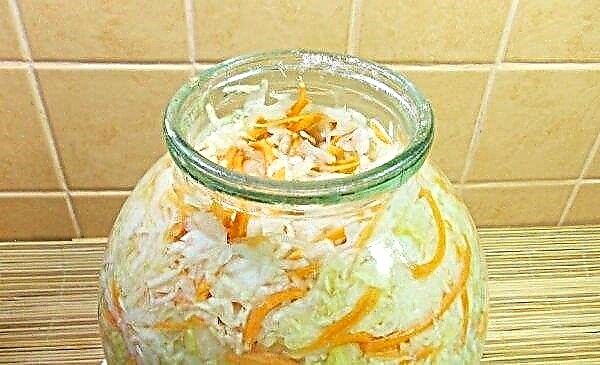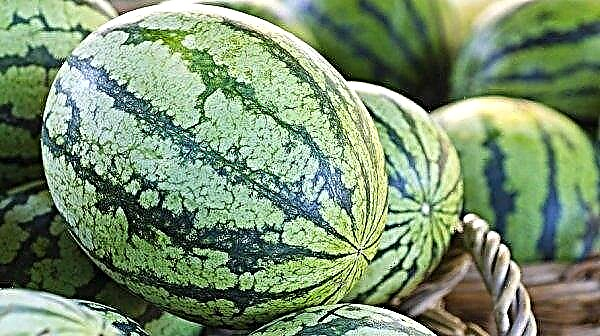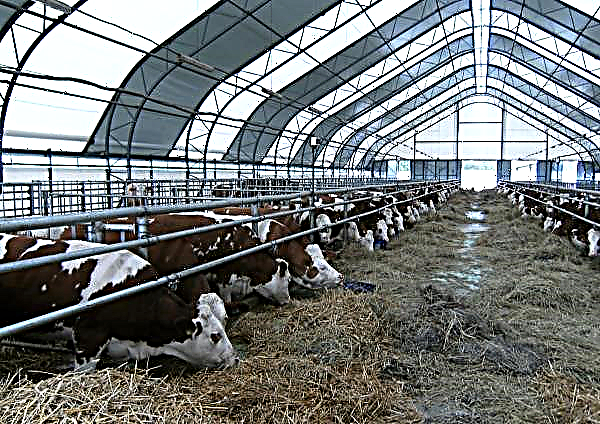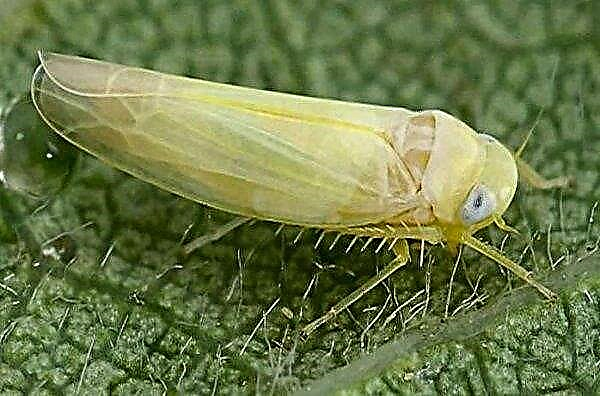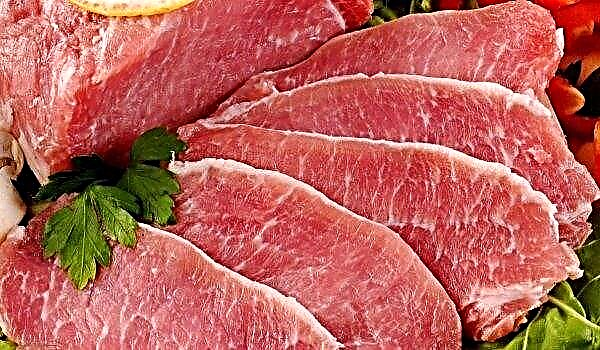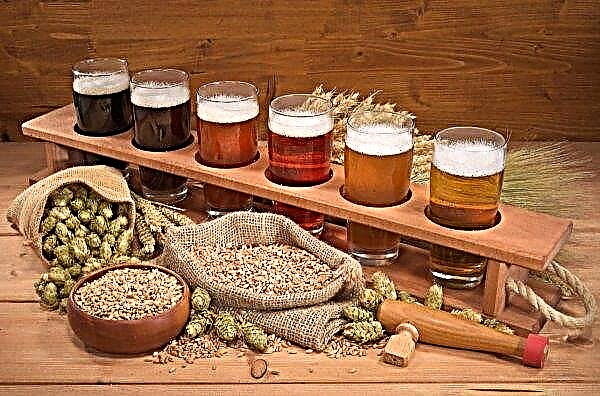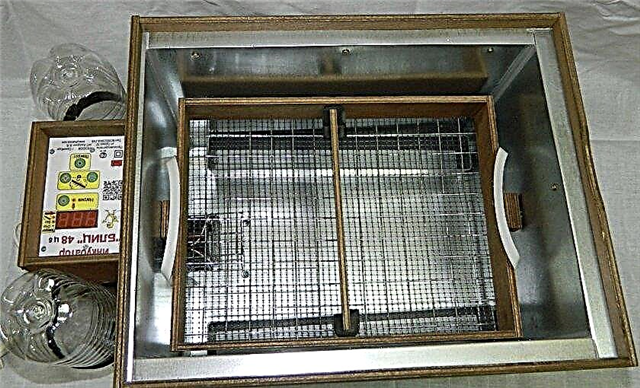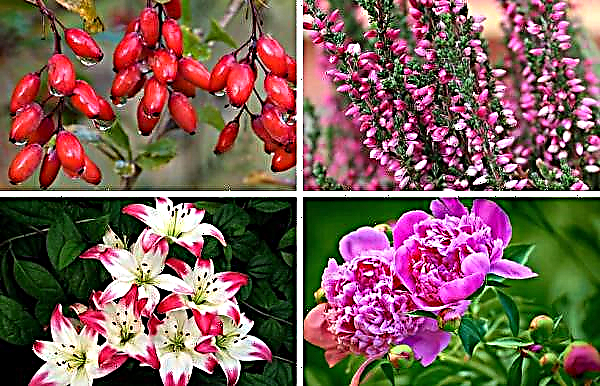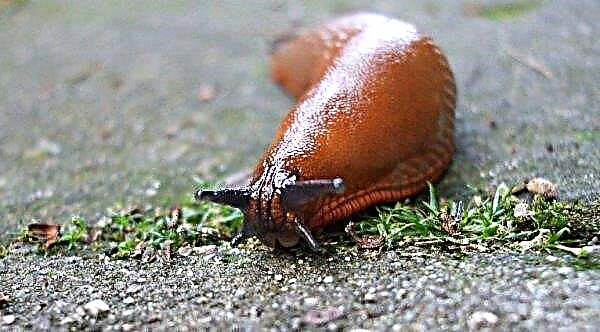Gooseberries are a delicious summer berry. The plant is quite unpretentious, actively grows and ripens in any climatic conditions, even in the northern regions. From how the summer resident will look after the bushes, the yield, the number of berries and the ripening time as a whole will depend. There are many varieties of gooseberries and one of the most popular is Neslukhovsky.
Selection history
Gooseberry Neslukhovsky was bred in a unit of the Institute of Horticulture of the Ukrainian Academy of Agricultural Sciences by breeders Shestopal Z.A and spouses Kopan K.N. and Kopan V.P. This is an early variety belonging to high-yielding and large-fruited, it differs from the rest in a particularly memorable unsurpassed taste. It combines the genes of two types of gooseberries: Mlievsky red and Plum. As a result of the selection, a strong, hardy plant with large shoots and good reproductive abilities was obtained.
Description
Characteristics of an adult shrub: the crown is compact, the bushes are of medium height, not dense, with strong dense and strong branches growing almost vertically upwards. Even under the weight of ripe berries, the branches do not bend to the ground. The berries are large, pink or red, after full ripening darken and become slightly transparent. The thorns are dark, pronounced, located on the shoot at a right angle. The pubescence of berries is weak, almost imperceptible. The fruits ripen in the second half of June.
Advantages and disadvantages
As with any variety, Neslukhovsky gooseberry has both pros and cons.
- Advantages:
- high taste;
- plentiful harvest;
- disease resistance.
- Disadvantages:
- does not tolerate drought.
Drought resistance, frost resistance
The plant tolerates hot summers, especially with regular watering. Drought is not to his liking. But the frost resistance of this shrub is medium, for the winter it is recommended to “wrap” the bushes with garden film, and put mulch under the base of the trunk. So the root system can be protected from freezing in harsh winters.
Important! Variety Neslukhovsky categorically does not tolerate waterlogging. If the plant is “flooded,” the shrub is very likely to become infected with powdery mildew, which will take a long time to plant.
Among other advantages of the plant: a high degree of resistance to pests, mold and diseases, this compares favorably with its berry counterparts.
Productivity and fruiting
The productivity of Neslukhovsky is high, from 4 to 6 kg of berries are harvested from one bush per year. The fruiting is active: on the shoots there are many berries, and even under the weight of the crop the branches do not bend down.
 Like other relatives, gooseberries of this variety actively bear fruit during the first 5 years of life, and in subsequent years, to harvest the plant, you need to trim, thin out and rejuvenate.
Like other relatives, gooseberries of this variety actively bear fruit during the first 5 years of life, and in subsequent years, to harvest the plant, you need to trim, thin out and rejuvenate.
Landing
Each summer resident dreams of a garden that gives a rich harvest. Let's find out how to plant the gooseberries of the Neslukhovsky variety, which seedlings to choose, how to care for young plants, and in what time frame all these actions are performed. Next is a description of the process.

The timing
Like other types of gooseberries, Neslukhovsky is planted either in spring or autumn. If you want the bush to bear fruit in the summer, then it is better to postpone the spring planting in the fall. Usually the ideal time for rooting seedlings is considered to be a period of 4-6 weeks before the onset of the first frost.
The best month for this is October, its first half. If planting is done in the spring, you can’t wait for the harvest this summer, the bush will bear fruit only next year.Choosing the right place
The best place to plant a plant is a moderately lit area of the garden or summer cottage. The east side will do, (where) where the amount of sunshine falling on the bush is optimal.
Constantly lit areas should be avoided, since the Neslukhovsky variety does not tolerate intense heat. Constant dampness is also not his companion. Too much moisture will cause mold and powdery mildew on the bush. It is good if the bush is planted on a hill, a hill.
Did you know? In the 19th century, almost all gooseberry varieties imported from France, England and Germany died from powdery mildew in Russia. Breeders armed themselves with knowledge and developed varieties resistant to this disease.
Selection and preparation of planting material
Young gooseberry seedlings of good quality and healthy looking are selected for planting. It is easy to recognize a healthy plant: it has juicy, bright leaves, brown-green branches and pronounced large spikes. All seedlings with dry branches, sluggish and dull leaves are not considered the best option.
Landing pattern
Neslukhovsky gooseberry is planted in the same way as other species. Two weeks before the proposed event, the soil is carefully loosened around the place where the bush will grow. A mixture of fertilizer is added to a pre-dug hole of 1.5 meters deep: a pair of humus buckets, 1 cup of calcium chloride and 2 cups of superphosphates. If the soil is black earth, sand is allowed to be added to it. Ideally, from each bush to the next in a row, a distance of 1.5 meters should be measured. Not all gardeners observe this rule, many seedlings plant very closely, as a result, impassable thickets of gooseberries are formed, from which it is extremely difficult to harvest.
Features of seasonal care
Experienced gardeners advise everyone who is just starting to grow gooseberries to not make the main mistake - try to do everything at once, get a giant crop. It is important to properly organize seasonal care, then the summer resident during the fruiting period will find a real treasure in the form of delicious and fragrant berries.
Soil care
Neslukhovsky does not need special care, but like other varieties, he likes planting in loose soil, as well as soil of moderate acid composition. Watering the plant during fruiting should be active, after 2 days, if the weather is dry. So the harvest will be more plentiful, but you can’t cut the crop before harvesting in any case, as this will damage the growing process in the future. The earth around the bush is periodically loosened, watered.
Preventative treatment
When visiting the cottage, you need to inspect the bushes for dry branches, pests, parasites. Dry branches are cut at the base so that they do not interfere with the growth of the plant, but you need to make sure that there is enough space for the remaining shoots.
From parasitesfor example, garlic water is used from aphids: 300 g of crushed garlic is added to 10 liters of water, it is infused for several hours, and then the bush is treated with strained liquid.
From the scab use soapy water: 80 grams of laundry soap are crushed into 1 liter of water, a teaspoon of kerosene is poured into the mixture. The same solution is good for preventing the appearance of saw cutters and fires.
Top dressing
Gooseberry is fed in several stages:
- before budding;
- when tying buds;
- after harvested;
- after loosening the earth under a bush.

All replenishment is applied exclusively to the soil in diluted form or in bulk. The ideal natural top dressing for gooseberries is humus or manure. It is introduced into the root zone at the rate of 1 bucket of fertilizer per 1.5 m².
Support
This kind of support is not required, the exception is those plants that the owner intentionally sits close to get a solid green wall from gooseberries. As a support, you can use trellises or a regular hedge. The trellises are made of ordinary stakes 1.5 m high, between which rows of wire are stretched at a distance of about 15–20 cm. Then gooseberry branches are threaded between the rows of wire and the plant is fixed on the support itself.
Pruning
Gooseberries have several types of scraps: preventive (seasonal), anti-aging and shaping. All of them are needed and important for the plant. Are carried out, as a rule, in the fall or in the spring. In summer, gooseberries are best left alone until all berries are picked. It is important to remember that after spring pruning of branches, at least four buds should remain on the bush. If the branches are pruned in the fall, this must be done before the first frost. For pruning, use a sector, tweak a branch in the upper part, leaving a shoot at least 30 cm long from the root zone.
What are the different types of pruning?
- preventative (carried out in spring and autumn on gooseberry bushes of any age, with this type of pruning, dried branches are removed);
- anti-aging (carried out in autumn on bushes that are more than 5 years old, dried branches are cut off by secateurs at the roots, and about 15 cm of shoots are plucked off the top of the branch. In total, at least 7-8 branches should remain on the bush);
- forming (performed in spring in young and mature shrubs in the middle part, whose age has not yet exceeded 5 years, the tip of the shoot 10-15 cm long is pinched off to the first rosette with leaves, the remaining branches are shortened by no more than one third of the total length).
Harvesting and storage
When in mid-July Neslukhovsky gooseberry gives a crop, you can pick berries from a bush. They ripen almost simultaneously, do not crumble and hold tightly on branches. After collecting the berries do not wash, so they will be stored much longer. Store the crop in wicker baskets or wooden crates, the bottom of which is covered with thick paper. An ideal storage place is a basement or cellar, the temperature is not higher than + 15 ° С.
Winter preparations
Before winter, gooseberries are fertilized with liquid top dressing, for example, Biohumus. This is done so that fertilizers can actively penetrate the soil in the fall, have a beneficial effect on the plant. After the winter “hibernation”, the bush will come in handy with mineral support in the form of simple or double superphosphate, and natural fertilizing, such as humus or manure.
Did you know? Kiwi is a huge cultivated gooseberry. This fruit was bred in ancient China and now kiwi is also known as the "Chinese berry".
Breeding methods
Gooseberry Neslukhovsky reproduces in the following ways:
- seedlings;
- seeds;
- division of the bush;
- horizontal layering;
- perennial branches;
- vaccinations.
For Neslukhovsky gooseberry, two types of reproduction (according to summer residents) are most characteristic - these are finished seedlings or branches. These two methods are very simple, do not require costs or special farming skills. Ready-made seedlings can be bought at any farmer's market, and layering allows you to get up to 10 new ones from one bush! Seeds are the most difficult material for breeding, because from the moment of planting in seedling boxes to planting in the soil 2-3 years pass despite the fact that constant monitoring of the plant is required.
Diseases and Pests
The following are the most common diseases of this plant:
- powdery mildew arises from dampness, is eliminated by such preparations as a solution of soda ash with laundry soap (3 tablespoons of soda and 80 g of grated soap are put on 10 liters of water) or Fitosporin, prepared according to the instructions (10 g per 5 liters of water);
- Septoria (a fungal disease, manifests itself in the form of small spots of brown color, which gradually merge into one big one), is eliminated by a solution of Bordeaux liquid (100 g of copper sulfate per 1 liter of water and in a separate container 150 g of lime per 1 liter of water. Each solution is added with water to 5 liters, lime water is filtered, and only after that the two solutions are combined.As a result, you get 10 liters of antiseptic) or Nitrafen, diluted according to the instructions in water;
- anthracnose - These are large rust-colored spots that are also eliminated by Bordeaux fluid.

Pests of the variety:
- aphid;
- sawfly;
- moth.

All types of parasites are perfectly eliminated by Actelik, Karbofos, Iskra or Fufanon, Rovikurt.
Important! The most favorite way of watering the Neslukhovsky variety is sprinkling. Bushes are watered from a watering can in the early morning or before sunset, when it is not so hot.
Subject to all the rules for choosing seedlings, planting and caring for the Neslukhovsky variety shrub, each farmer will receive a rich harvest. Berries are ideal for making jam, jam, jams and jellies. They are sweet, have a persistent aroma, rich taste and are full of healthy vitamins.

